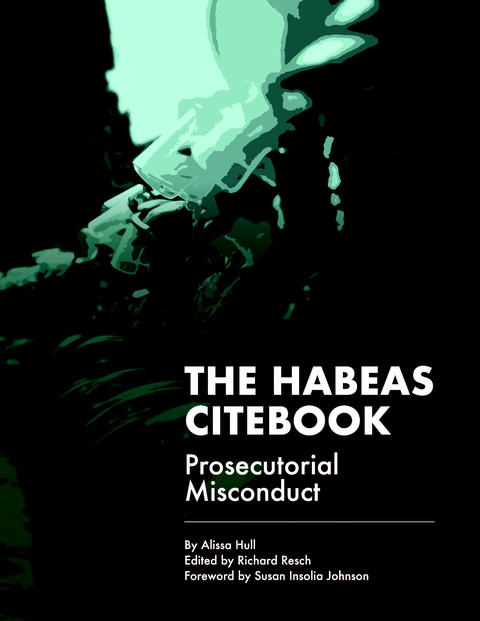×
You've used up your 3 free articles for this month. Subscribe today.
New Lie Detectors Are On the Way, But Are They Better Than the Old One?
Loaded on March 18, 2020
by Anthony Accurso
published in Criminal Legal News
April, 2020, page 43
Location:
United States of America.
by Anthony Accurso
New “lie detectors” are being marketed as viable replacements for the aging, debunked polygraph and are being tested in environments where the polygraph never penetrated. But questions remain whether such devices are any improvement on the old one.
Many people are familiar with the classic ...
Full article and associated cases available to subscribers.
As a digital subscriber to Criminal Legal News, you can access full text and downloads for this and other premium content.
Already a subscriber? Login
More from this issue:
- News in Brief
- Cops Killed Nearly 13 Times More People Than Mass Shooters, by Bill Barton
- U.S. District Judge Blows Open ATF Fake Stash-House Stings, Wants to Know Why They Only Target Minorities, by Dale Chappell
- New Jersey Tightens Reins on Civil Asset Forfeiture, by Douglas Ankney
- Nevada Supreme Court: 26-Month Delay Between Charges and Arrest Constitutes Speedy Trial Violation, by Anthony Accurso
- New York to Seal Convictions for Small Amounts of Marijuana
- Warrant Gives Police Access to DNA Database, by Jayson Hawkins
- Rhode Island Supreme Court Reverses Conviction Due to Prosecutor’s Remarks and Jury Consideration of Inadmissible Evidence, by Douglas Ankney
- Colorado Supreme Court Announces Implied Bias the Same as Actual Juror Bias, Requiring Automatic Reversal, by Anthony Accurso
- Racial Disparity at Sentencing on the Rise, by Anthony Accurso
- NYC Drug Prosecutor Bucks Trend of Releasing List of Cops with Credibility Issues, by Douglas Ankney
- Louisiana Supreme Court: State Abused Charging Authority by Dismissing and Reinstituting Charges to Circumvent Adverse Court Ruling, by Anthony Accurso
- Jury Nullification as a Cure for Prosecutorial Overreach, by Anthony Accurso
- New Lie Detectors Are On the Way, But Are They Better Than the Old One?, by Anthony Accurso
- California Supreme Court: Positioning Computer Monitor to Obstruct Defendant’s View of Complaining Witness Violates Confrontation Clause, by Douglas Ankney
- Ohio Supreme Court: Ineffective Assistance of Counsel Analysis Applies to Failure to Seek Waiver of Court Costs, by David M. Reutter
- Massachusetts Supreme Judicial Court: Police Must Inform Arrested Driver That Passenger Can Assume Custody of Vehicle if Lawful and Practical as Alternative to Impoundment, by Douglas Ankney
- California Court of Appeal: Hunch That Proves Correct Is Not Reasonable Suspicion for Traffic Stop, by Douglas Ankney
- Sex Offenders Go to W.A.R., by Edward Lyon
- New Orleans Sheriff’s Office Tracked Cellphones Absent Warrants, by Chad Marks
- Nevada Supreme Court: Duress Defense May be Used for Non-Death Penalty Charges, Even When Connected to Charges Punishable by Death, by Dale Chappell
- Reform-Minded Prosecutors Use Charging Discretion to Benefit Communities, by Anthony Accurso
- Kansas Supreme Court: Claim of Illegal Sentence Raised for First Time on Appeal Entitled to Merits Review, by Michael Berk
- Pennsylvania Supreme Court Holds Retention of Defendant’s ID Card Constitutes ‘Seizure’ for Fourth Amendment Purposes, by Dale Chappell
- Sex Offender Registries Grounded in False Notions, by Anthony Accurso
- Third Circuit Holds ‘Bare’ Arrest Record Insufficient to Support Higher Sentence, by Dale Chappell
- Fact or Fiction, Television Crime Shows Ignore Racism and Reality, by Michael Fortino, Ph.D
- The Faulty Science of Breathalyzers, by Jayson Hawkins
- Sixth Circuit: Ohio’s Stringent Post-Conviction Filing Deadline Opens Window for Federal Review Under Trevino, by Anthony Accurso
- Maryland Court of Appeals Announces, When Requested, Trial Courts Must Ask During Voir Dire Whether Jurors Will Follow Court’s Instructions on Presumption of Innocence, Burden of Proof, and Right Not to Testify, by Douglas Ankney
- Louisiana Supreme Court: When an Identified Attorney Seeks to Assist a Person in Custody and Police Fail to Inform the Person, Inculpatory Statements Must Be Suppressed, by Douglas Ankney
- D.C. Circuit: 18 U.S.C. § 1114 Does Not Apply Overseas But § 924(c) Does, by Douglas Ankney
- Third Circuit: Confrontation Clause Violated When Jury Is Told ‘Other Guy’ Referenced in Non-Testifying Codefendant’s Statement Is the Defendant, by Douglas Ankney
- Georgia Supreme Court Overrules 50 Years of Jurisprudence and Announces Courts Are to Consider Cumulative Prejudice of Trial Court and Counsel Errors, by Douglas Ankney
- Ninth Circuit Orders Habeas Relief After California Concedes Conviction Should Be Overturned Due to Defense Counsel’s ‘Virulent Racism’, by Douglas Ankney
- Michigan Supreme Court: Defendant Entitled to Self-defense Jury Instruction, by David M. Reutter
- Seventh Circuit Holds Brain Injury May Allow Equitable Tolling to File Late Habeas Petition, by Dale Chappell
- Life Sentence for Murder Overturned by New DNA Technology, by Michael Fortino, Ph.D
- Expert’s Burn-Pattern Conclusions Flawed, by David M. Reutter
- New York’s SARA Requirements Force Sex-Offenders into Homelessness Then Hold Them in Prison Due to Their Homelessness, by Kevin Bliss
- Law Review Article Zeros in on Roadblocks to Plea Bargain Fairness and Effectiveness, by David M. Reutter
- Kansas Supreme Court: State Failed to Prove Building Was a Dwelling, by Douglas Ankney
- Maine Supreme Court Declares Blood Draw Statute Unconstitutional, Overruling Cormier, by Douglas Ankney
- Utah District Court Finds First Step Act Gives Court Authority to Reduce Stacked 55-Year § 924(c) Sentence, by Chad Marks
- Seventh Circuit Vacates Guilty Pleas Based on Misinformation of Mandatory Minimum, by David M. Reutter
- More Trainings Are Not the Answer to Police Violence Against Disabled People, by Euree Kim
- Sixth Circuit Adopts ‘Naked Eye Test’ for Altered Firearm Serial Number Enhancement, by Dale Chappell
- Connecticut Supreme Court Clarifies Standard of Review for Confrontation Clause Claims; Reverses and Remands for a New Trial, by Douglas Ankney
- Spirited (But Problematic?) Advocacy for Bernie Madoff to Receive Compassionate Relief, by Professor Douglas A. Berman
- Iowa Supreme Court: Officer’s Delay of Traffic Stop to Investigate Other Matters Unconstitutional, by David M. Reutter
- The Rise of Smart Camera Networks, and Why We Should Ban Them, by Michael Kwet
More from Anthony Accurso:
- Fifth Circuit Denies Qualified Immunity to Louisiana Officials Who Forced Prisoner to Work with Broken Surgical Screws in Ankle, May 1, 2025
- Studies Link Incarceration with Lower Cancer Survival Rates—For Prisoner’s Partners, Too, May 1, 2025
- ACLU Sues BOP Over Failure to Implement First Step Act Release Credits, May 1, 2025
- Federal Government Circumventing Fourth Amendment by Buying Data From Data Brokers, April 15, 2025
- Crowdsourcing a Map to Track License Plate Surveillance, April 15, 2025
- D.C. Police Continue Heavy Investment in Social Media Monitoring, April 15, 2025
- $7.15 Million for Oklahoma Prisoner Exonerated After Nearly 50 Years, April 1, 2025
- North Carolina Reimburses Prisoner $2,500 for Law Books Destroyed by Guards, April 1, 2025
- Ninth Circuit: No Exception to Due Diligence in Discovery Even for “Conclusive Evidence”, April 1, 2025
- $250,000 Settlement But No Charges After Alabama Guards Beat Prisoner To Death, April 1, 2025





